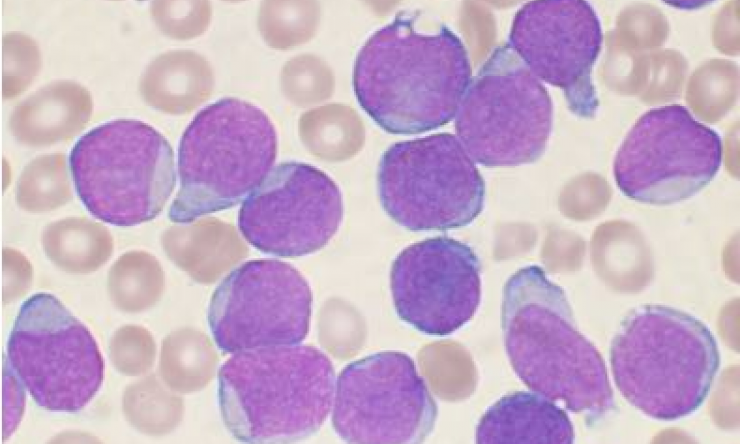Gene RARA surfaces as potential drug target in pediatric AML
Researchers at Baylor College of Medicine and Texas Children’s Hospital have uncovered a potential Achilles heel of acute myeloid leukemia (AML) in children that could lead to new treatments for this devastating disease.
The team was the first to identify specific super enhancers (SE) – regions of DNA that drive the over production of certain gene products – in cells from children with AML. These SE were associated with leukemia-promoting genes and were generally distinct from the previously published SE of adult AML. One SE of specific interest was associated with the gene RARA. Sixty-four percent of the pediatric patient AML samples the researchers studied had this RARA SE.
AML cells with a RARA SE were sensitive to treatment with the drug tamibarotene in lab cultures and in animal models, prolonging survival and reducing the leukemia burden. In contrast, AML cells without RARA SE were not sensitive to tamibarotene treatment. The findings, published in Blood Advances, support the development of a clinical trial to evaluate tamibarotene in children with AML with high RARA levels.
“Our team is interested in finding new drugs that are more effective and less toxic to treat children with AML,” said corresponding author Dr. Joanna Yi, assistant professor of pediatrics-oncology at Baylor and Texas Children’s.
Dr. Yi and her team seek to identify molecular drivers of pediatric AML that are specifically expressed in leukemia cells and absent in normal cells. “This would increase the chances of developing a more effective treatment for AML that would specifically attack the leukemia cells while having no or minimal effects on normal cells in the body,” Yi explained.
“In general, pediatric cancers are genomically quiet, meaning that, typically, few mutated genes have been associated with childhood cancers. Moreover, the mutations that have been found do not seem to be susceptible to regulation by drugs,” Yi said.
As found in other conditions, malfunctioning gene regulators can alter the production of normal gene products. For instance, super enhancer gene regulators can trigger an overabundance of a certain normal protein, which may disrupt cellular functions in ways that can lead to cancer.
Yi and her colleagues were excited to find that tamibarotene slowed the proliferation, induced apoptosis or promoted cell maturation in lab cultures of patient AML cells with the RARA SE. In contrast, cells without the RARA SE were not sensitive to the drug.
In addition, tamibarotene extended survival in an animal model of AML with RARA SE and did not slow cancer growth in an animal model lacking RARA SE.
“Our findings support taking the next step toward bringing this potential new treatment to the clinic by conducting a clinical trial of tamibarotene in children with AML having high RARA levels,” Yi said.
For a complete list of contributors their affiliations and the financial sources of this work, go to the publication.










